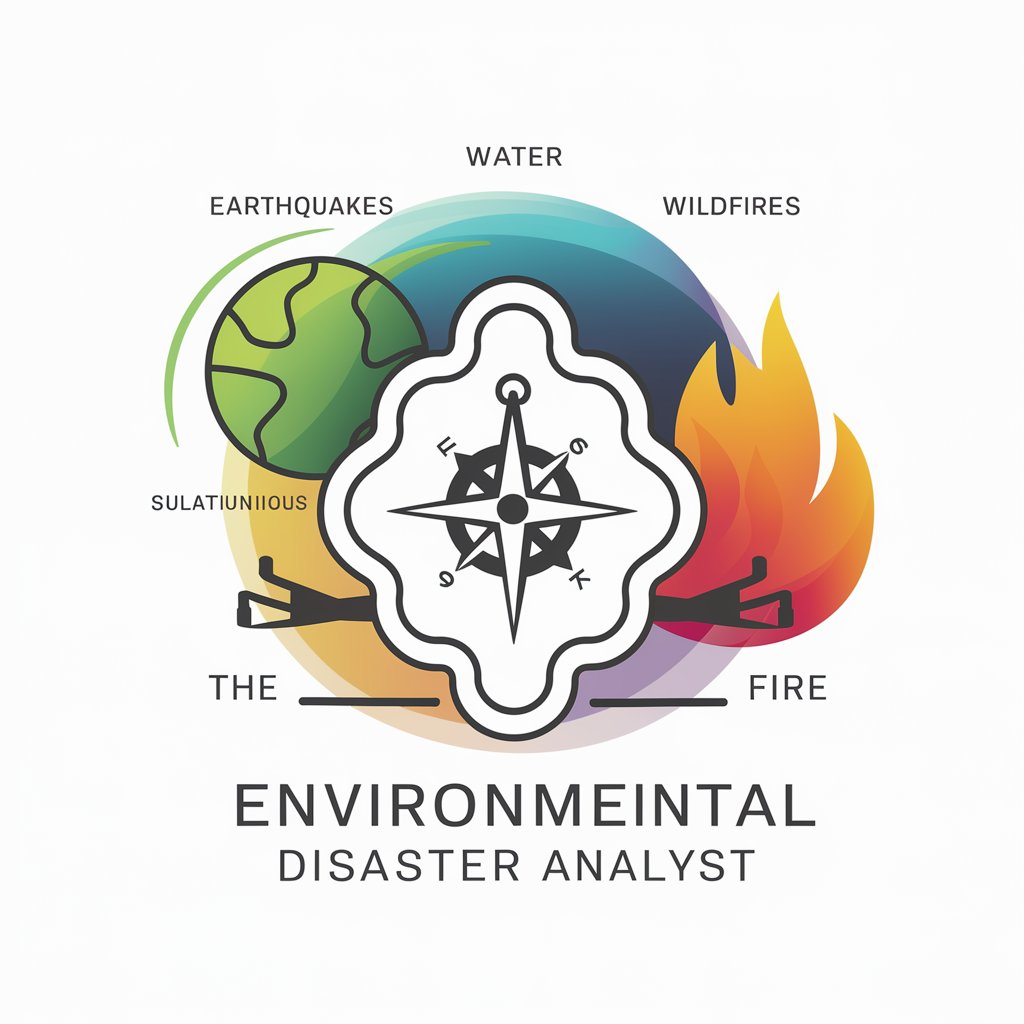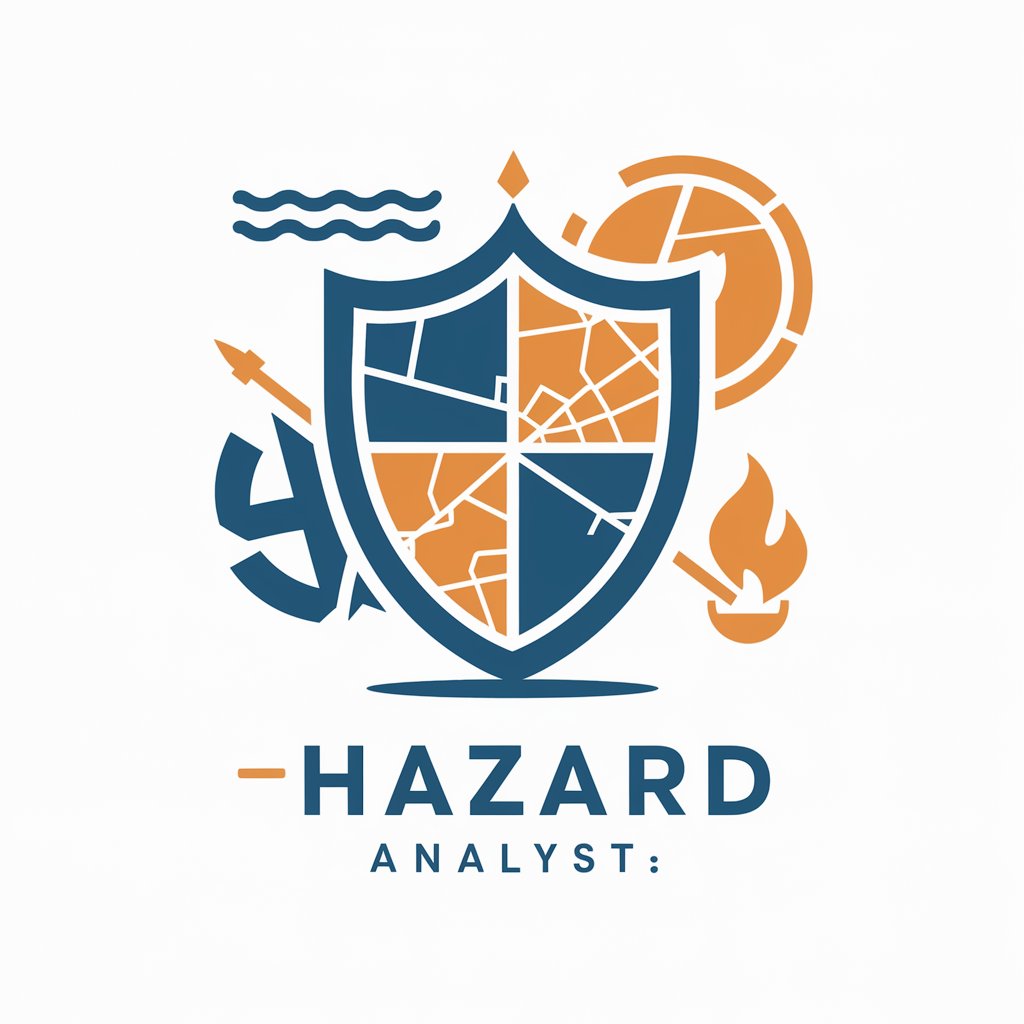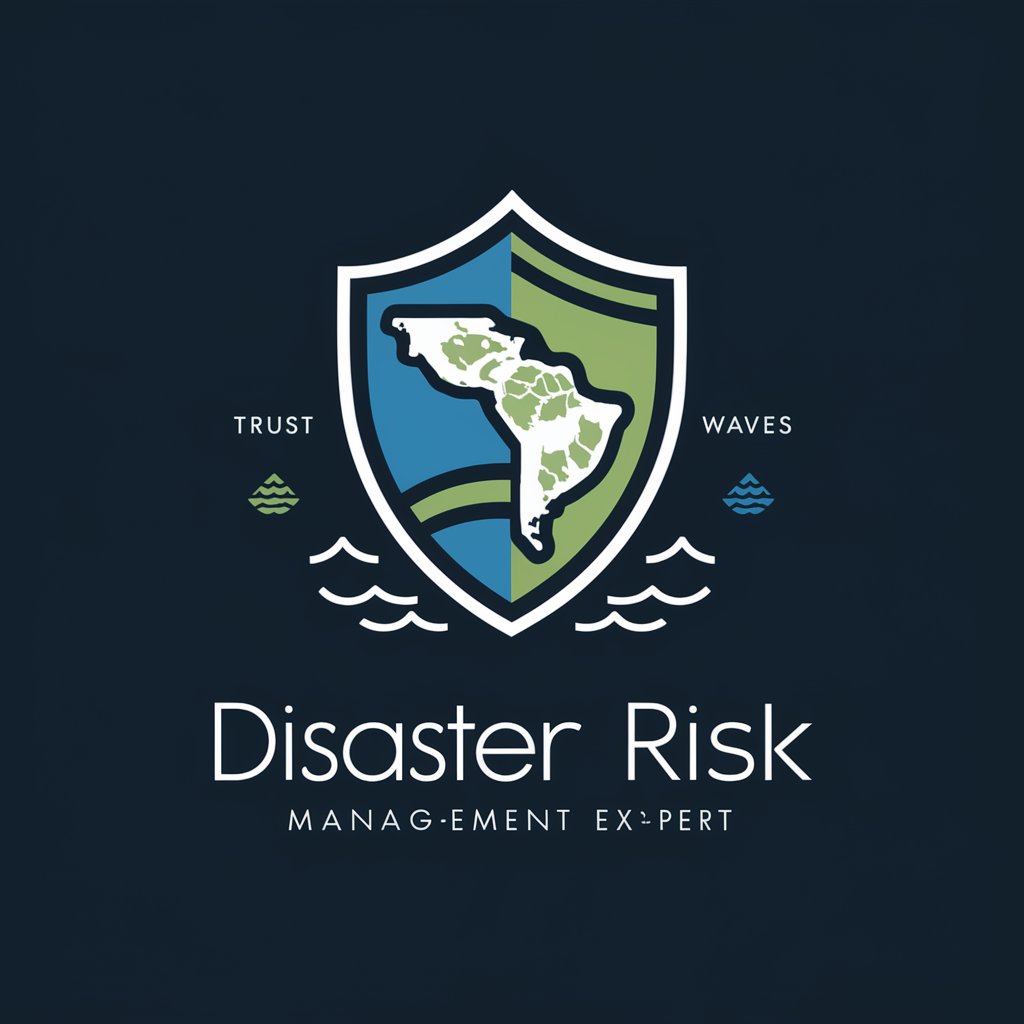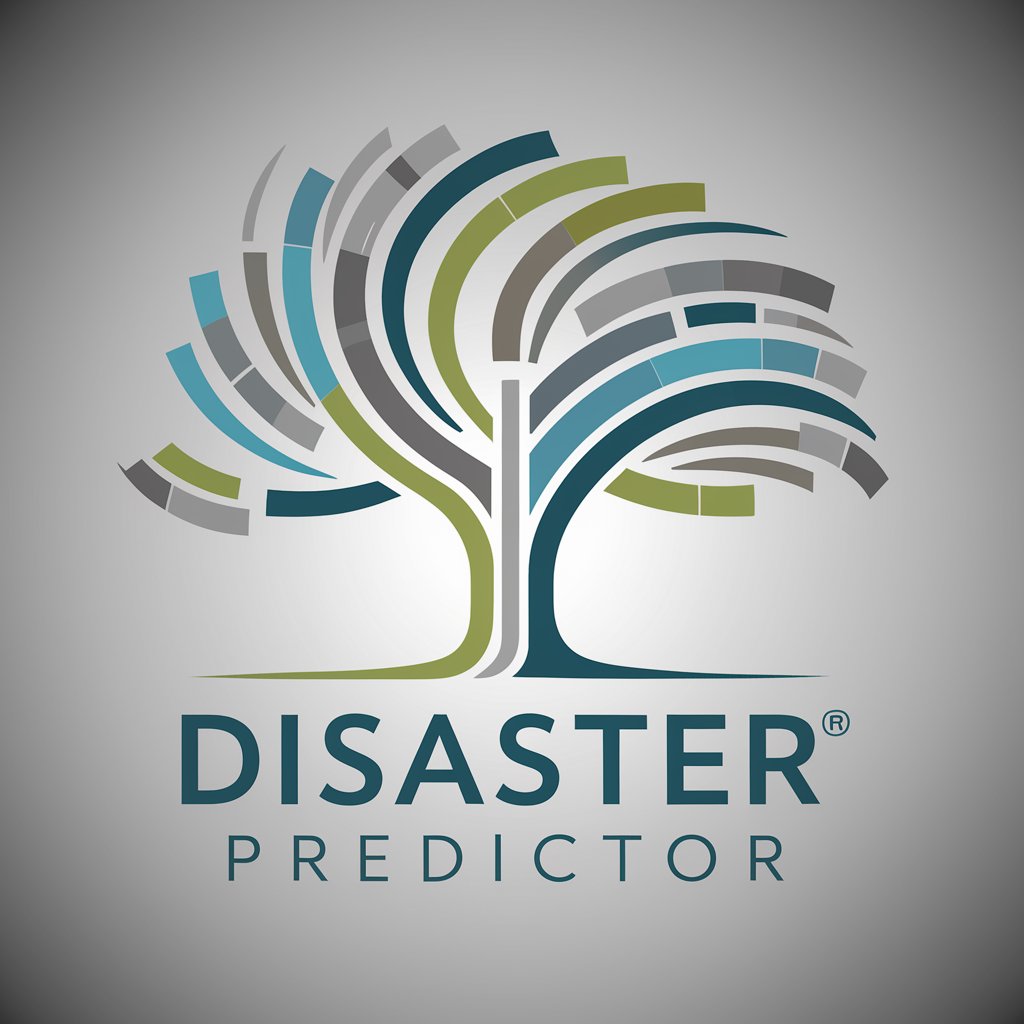
Environmental Disaster Analyst - Environmental Disaster Analysis

Welcome! Let's explore and prepare for environmental disasters together.
AI-powered disaster scenario simulation and analysis
Simulate the potential impacts of a category 5 hurricane on a coastal city, focusing on infrastructure and human life.
Analyze the environmental and economic effects of a major wildfire in a densely forested area.
Provide disaster preparedness advice for communities at risk of severe flooding due to climate change.
Discuss the long-term ecological consequences of a significant oil spill in a marine environment.
Get Embed Code
Overview of Environmental Disaster Analyst
Environmental Disaster Analyst is a specialized AI tool designed to simulate, analyze, and offer insights on various environmental disaster scenarios. It is equipped to evaluate the potential impacts of disasters such as earthquakes, floods, wildfires, and climate change on the environment, economy, and human communities. By integrating data analysis, simulation models, and expert knowledge, this tool provides valuable predictions and recommendations for disaster preparedness and mitigation. For example, it can simulate the spread and impact of a wildfire in a specific region, considering local vegetation, weather conditions, and urban development patterns, to help in planning evacuation routes and firefighting strategies. Powered by ChatGPT-4o。

Core Functions and Applications
Scenario Simulation
Example
Simulating the impact of a Category 5 hurricane hitting the Florida coast, including storm surge, flooding, and wind damage estimations.
Scenario
Used by emergency management agencies to design evacuation plans and by insurance companies to assess potential claims.
Impact Analysis
Example
Analyzing the economic and environmental effects of a prolonged drought in the Midwest, affecting agriculture, water supply, and natural ecosystems.
Scenario
Employed by government policymakers to allocate resources for drought relief and by NGOs to target aid and conservation efforts.
Preparedness Advice
Example
Offering strategies for communities to prepare for potential volcanic eruptions, including evacuation routes, communication plans, and supply stockpiling.
Scenario
Utilized by local governments in volcanic regions to develop public safety plans and by residents for personal preparedness.
Target User Groups
Emergency Management Agencies
Professionals responsible for planning and responding to disasters. They can use the tool to simulate scenarios, plan evacuations, and coordinate response efforts effectively.
Environmental Scientists and Researchers
Experts studying climate change, natural disasters, and their impacts. This tool helps them analyze data, test hypotheses, and publish findings on disaster risks and mitigation strategies.
Government Policymakers
Officials who develop policies and allocate resources for disaster preparedness, response, and recovery. The tool's insights support evidence-based decision-making to protect communities and ecosystems.
Insurance Companies
Insurers assessing risk and potential claims from natural disasters. By understanding disaster scenarios, they can more accurately price insurance products and prepare for future claims.

How to Use Environmental Disaster Analyst
1
Initiate your exploration by visiting yeschat.ai, offering a complimentary trial, no sign-up or ChatGPT Plus subscription required.
2
Choose the 'Environmental Disaster Analyst' from the available GPT options to start simulating environmental disaster scenarios.
3
Input specific data or parameters related to the environmental disaster you are interested in analyzing, such as location, disaster type, and date.
4
Review the generated scenarios, impact analyses, and preparedness advice. Use these insights to understand potential environmental, economic, and human impacts.
5
Leverage the provided mitigation strategies and preparedness advice to formulate or enhance disaster management plans.
Try other advanced and practical GPTs
解惑猫头鹰
Empowering curiosity with AI.

Better Dads
Empowering fathers with AI-powered guidance.

A+ Agile SP God
Streamlining Agile Project Management with AI

Wealth Builder
Empowering financial decisions with AI

Promptle
Unleash creativity with AI-powered art.

LAIA - Your Own Adventure
Craft Your Story, Visualize Your Adventure

Polly - Your Tipsy Island Guide
Master Tipsy Island with AI-Powered Guidance

unbundled vc AI assistant
AI-powered VC Insights at Your Fingertips

Task Master AI
AI-Powered Task Simplification

Portrait Painting Partner
AI-powered portrait painting mentorship.

Native 原声
Bridging Language Gaps with AI

SEO Architect
Elevate Your SEO Game with AI

Frequently Asked Questions about Environmental Disaster Analyst
What types of disasters can the Environmental Disaster Analyst simulate?
This tool can simulate a wide range of environmental disasters, including earthquakes, floods, wildfires, hurricanes, and climate change-related events, providing comprehensive analyses of their potential impacts.
How accurate are the simulations provided by the Environmental Disaster Analyst?
While simulations are based on current scientific models and historical data, accuracy can vary depending on the complexity of the disaster and the availability of data. Users are encouraged to use these simulations as a guide rather than absolute predictions.
Can the tool provide advice on disaster preparedness?
Yes, the Environmental Disaster Analyst offers tailored advice on disaster preparedness and mitigation strategies, helping users to plan and reduce the potential impact of environmental disasters.
Is the Environmental Disaster Analyst suitable for academic research?
Absolutely, academics and researchers can utilize the tool to simulate disaster scenarios for study, understand potential impacts, and explore mitigation strategies, contributing valuable insights to the field of environmental science.
How can policymakers benefit from using the Environmental Disaster Analyst?
Policymakers can use the tool to assess the potential impacts of environmental disasters on communities, infrastructure, and economies, aiding in the development of more informed and effective disaster management and climate adaptation policies.





